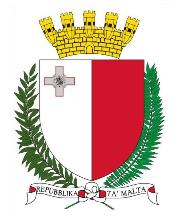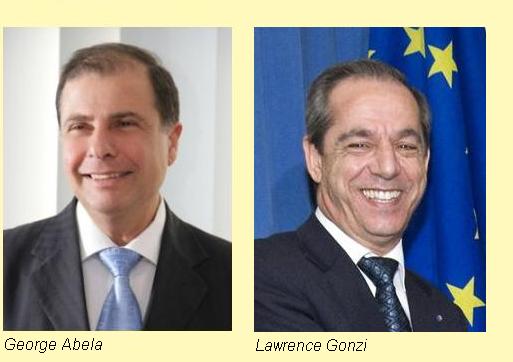

REPUBLIC OF MALTA
• Official name: Repubblika ta' Malta (Republic of Malta)
• Location: Southern Europe
• International organisations: Commonwealth of Nations, Council of Europe, European Union,
Organisation for Security and Co-operation in Europe, United Nations, World Trade Organisation
• Borders: None
• Coastline: Mediterranean Sea
• Land area: 316 Km2
• Population: 413,000
• Annual GDP (PPP) per capita: US$23,800 (2009 CIA estimate). World ranking: 41
• Ethnicity: Virtually the whole population is Maltese. The Maltese are a mix of Italian and Arabic peoples.
• Languages: Maltese and English are the official languages. Italian used to be common but has given way to
English.
• Religion: Almost the whole population are Catholic Christians.
• Form of government: Parliamentary democratic republic
• Capital: Valetta
• Constitution: The
Constitution of Malta came into effect on 21 September 1964.
• Head of state: The President, elected by the legislature for a five-year term; President
George Abela took office on 4 April 2009. The President's
functions are largely ceremonial.
• Head of government: The Prime Minister, appointed by the President. The Prime
Minister is the leader of the largest party in the legislature and is accountable to it.
• Legislature: Malta has a unicameral legislature, the House of Representatives,
which has 65 members elected for five-year terms from multi-member constituencies.
• Electoral authority: The Malta Election Commission
administers national elections.
• Freedom House 2009 rating: Political Rights 1, Civil Liberties 1

Political history
Malta was ruled by the Arabs from the 9th century until 1127, when it was taken by the Sicilian Normans, who
ceded it to the Knights of the Hospital (now the Knights of Malta) in 1530. The knights retained the islands until 1798,
when they were evicted by the French. The British captured Malta in 1800 and formally acquired it in 1814. British rule
was unchallenged until a nationalist movement arose after World War I. Internal self-government was granted in 1921, but
independence was delayed because of the value to Britain of the naval facilities at Valetta. Malta finally became
independent in September 1964, and became a republic in 1974. Malta joined the European Union in May 2004.
Maltese politics have been dominated since the 1930s by the rivalry between the conservative
Nationalist
Party, which has the backing of the Catholic Church, and the Maltese Labour
Party, once a militant socialist and nationalist party but now a moderate social democratic party. Labour under Dom
Mintoff led Malta to independence and also made the country a republic. The Nationalists under Eddie Fenech Adami took
Malta into the EU in the face of fierce Labor opposition. In 2004 Fenech Adami was elected President and
Lawrence Gonzi succeeded him as Nationalist leader and
Prime Minister. At the 2008 elections, Labor won in terms of seats gained, because the
preferential votes of eliminated minor parties favoured Labor. But because the Maltese constitution stipulates that the
party gaining a plurality of votes must win a majority of seats, four extra seats were allocated to the Nationalists to
give them an artificial majority. It's hard to see what the point is of Malta having a preferential voting system, if
its results are to be negated in this way.
Updated April 2010
|

